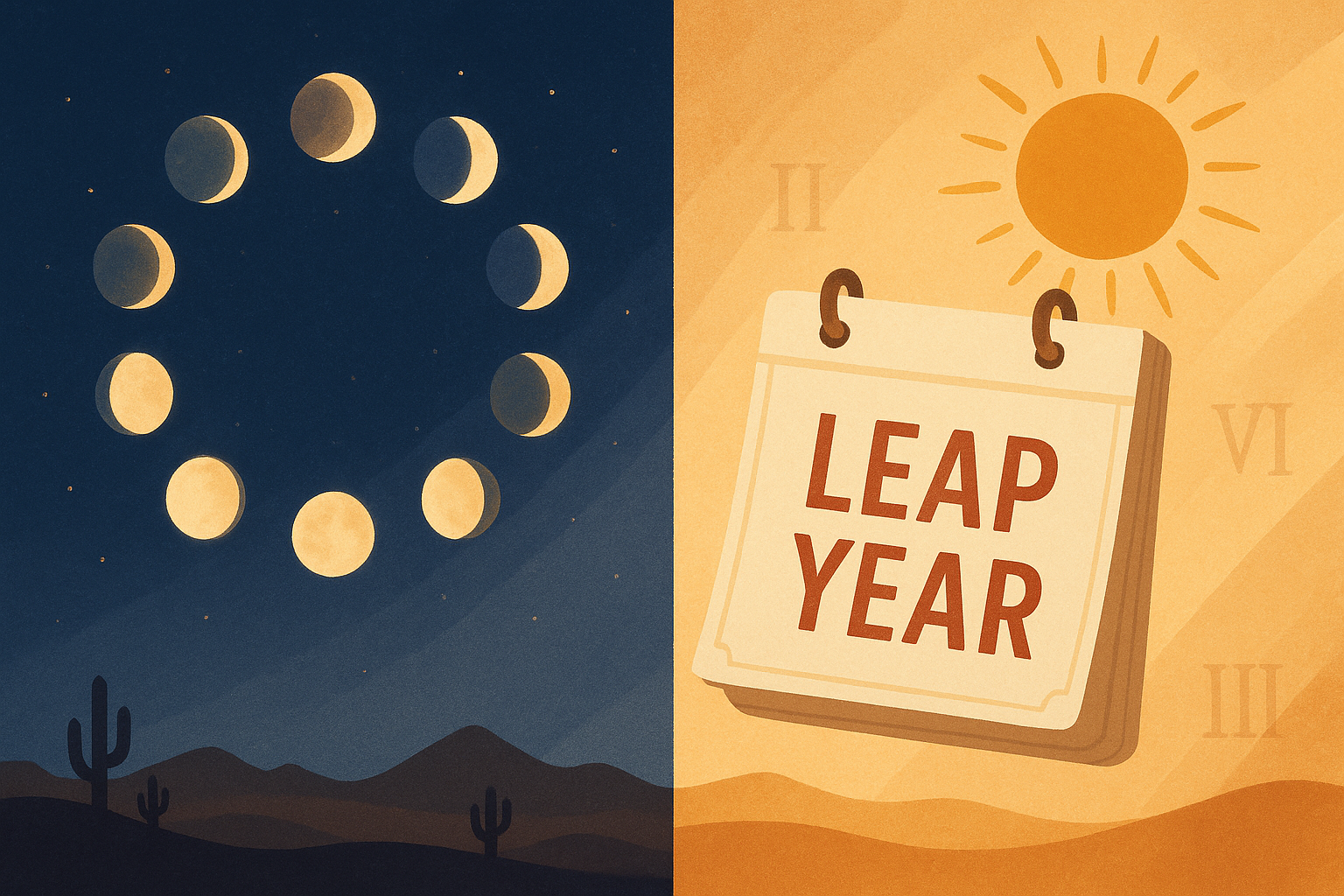Lunar calendar vs solar calendar — it’s more than just a way to tell time; it’s a window into how civilizations view reality.
Table of Contents
Humanity’s First Calendar
For thousands of years, the moon was humanity’s universal timekeeper. Ancient Egyptians, Babylonians, Chinese dynasties, and Arab tribes all marked the passage of months by watching the moon’s cycle — from the slim crescent to the full glowing disc, then back to darkness.
This lunar system was simple, elegant, and shared by civilizations across the globe: a new moon meant a new month.
Lunar Calendar vs Solar Calendar: Key Differences
It was only relatively recently, with the spread of Western and Roman influence, that much of the world shifted to a solar calendar — the Gregorian calendar we use today.
Here’s the catch: the solar year doesn’t divide neatly into twelve months. The Romans and later Europeans had to patch the mismatch with leap years (also called bissextile years) and other adjustments to keep the calendar aligned with the seasons.
While the solar calendar is highly precise for agriculture and seasonal planning, it reflects a human attempt to make time fit a fixed framework — even if that means reshaping reality to suit our needs.
Why Ramadan Moves Through the Seasons
Islam follows a pure lunar calendar — 12 months, each beginning with the sighting of the new moon, totaling about 354 days. This is about 11 days shorter than the solar year, meaning that Islamic months drift through the seasons over time.
Ramadan may arrive in the long, warm days of summer for several years, then slowly shift until it falls in the short, cool nights of winter — and eventually circle back again.
This cycle means that over a lifetime, Muslims will experience Ramadan under many different conditions: fasting in the heat, fasting in the cold, breaking fast in early evenings, breaking fast late at night.
Islam’s Wisdom: Adapting to Reality, Not Changing It
Instead of “fixing” the lunar calendar to match the solar one, Islam leaves it as it is. This teaches an important spiritual lesson: time belongs to Allah, and our role is to adjust ourselves to His order, not the other way around.
In a world that often seeks to control and standardize everything, the Islamic lunar calendar calls us to adapt, not resist.
Flexibility is a Sign of Life
In nature, stiffness belongs to what is dying or already dead — like an old, brittle branch that snaps under pressure. Flexibility belongs to the living — like a young, supple branch that bends with the wind.
By keeping to the lunar calendar, Islam trains us to be like that living branch: ready to bend, to change, to adjust, and to thrive no matter what season life places us in.
Living by the Moon: A Timeless Lesson in Faith and Flexibility
The moon calendar in Islam is not just a way to mark dates — it is a way to live. It connects us to the ancient rhythm of time, reminds us of our place in the natural order, and shapes our character through adaptability and patience.
Ramadan’s movement through the seasons is not an inconvenience. It’s a living lesson: true faith doesn’t demand that reality change for us — it calls us to grow until we can meet reality as it is.
If you’d like to know more, you can read:
Want Your Kids to Understand the “Why” Behind Islam?
At Mayous Publishing, our children’s books don’t just tell stories — they explain the why behind Islamic beliefs and practices in a way kids love. Each book weaves real Islamic wisdom into fun, engaging stories so your child learns while enjoying the adventure.
You can explore our catalog of fully illustrated storybooks here:
👉 Muslim Kids Storybook Catalog
Or you can access our free digital library and find your next favourite bedtime story here:
